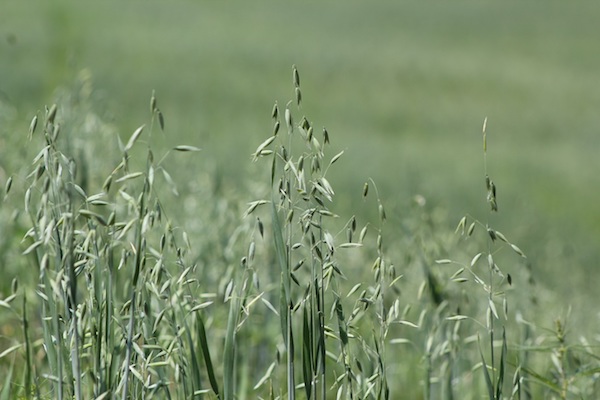Need Spring Pasture? Try Oats
April 2017

If you did not plant winter, annual small grains for spring forage in the fall last year, there are not many opportunities remaining to produce forage for grazing or hay. The last remaining option to consider is spring-planted oats. Oats can be planted in early spring for pasture or hay. There are risks associated with this strategy, mainly due to weather and diseases. However, spring oats can be productive and are an option to increase a deficient spring forage supply.
Seeding Date
In the western Corn Belt, the usual planting window for spring oats is between March 15 and April 1 with an optimum planting time during the third week of March. If dry weather and above freezing temperatures occur in late February and early March, the planting date can be shifted closer to March 15. However, if conditions are wet, damp, and cold during late February and early March, then planting may be delayed until early April.
Seeding Rate and Depth
Spring planted oats do not produce many tillers. Consequently, a higher seeding rate and slightly shallower planting depth should result in faster establishment and increased growth.
Growth is usually improved when seed is drill-planted at a seeding rate of 80 to 100 pounds of seed per acre (25 to 30 seeds/sq. ft.). In areas with lower precipitation, 40 to 60 pounds of seed per acre are more common (12 to 18 seeds/sq. ft.). Seeding depth can be as deep as 1½ inches, but planting at only ½ to ¾ inches deep will increase the rate of emergence, establishment, and forage production potential.
Cultivars
Nearly all seed dealers will have certified seed oats available. Some of the more common available cultivars are ‘Jerry’, ‘Bob’, ‘Goliath’, and ‘Shelby 427’. There are others that can be productive as well. Feed oats are usually relatively cheap, but they are rarely a wise purchase, because they are often not tested and may contain weed seeds (noxious weed seeds in particular), have unknown seed germination, and other foreign material presence. Seed laws usually require seed being sold for planting purposes have a tag with a recent test result for germination, weed seed, and foreign material.
Forage Production
Under good growing conditions, forage production from spring-planted oats should range between 2500 to 5000 pounds of forage per acre. Based on this amount of forage production, planning should include N fertilizer at a rate of 60 pounds actual N per acre after establishment. Oats can mature quite rapidly once the spring temperatures began warming.
Estimated Cost of Production
Spring oats is not inexpensive to grow. At the proper seeding rate for forage production, the establishment operation, including seed cost, will range from $30 to $40 per acre. Additionally, nitrogen fertilizer and application costs will be from $35 to $40 per acre. In total, the costs of producing oats for grazing or hay will likely range from $75 up to $100 per acre, excluding land cost and overhead.
Grazing and Haying Management
For grazing, oats should be a minimum of 6 inches tall before grazing. Each acre of spring-planted oats should provide between 35 and 60 days of grazing for a beef cow when stocked at 1 mature cow per acre. Growing animals, up to 750 pounds, can be stocked at approximately 1.5 animals per acre for 60 days.
For hay, spring-planted oats should be cut at early heading. Once seedheads begin to emerge, there will be no appreciable increase in yield. Simultaneously, forage nutritive value will decrease substantially due to the accumulation of stem tissue and also leaf loss.
Spring-planted oats is not an inexpensive, risk-free solution for solving a deficient forage supply. There are substantial risks involved due to weather, insects, and diseases. However, with some planning and a little luck, spring-planted oats can add forage to a short or non-existent forage supply.
For additional information on using annuals to produce forage visit Forage Crop and Pasture.
Reference
By Daren Redfearn, Nebraska Extension Forage and Crop Residue Specialist
Mary Drewnoski, Nebraska Extension Beef Systems Specialist
Jay Parsons, Biosystems Agricultural Economist
University of Nebraska–Lincoln
back to Beef Forage Crops Systems